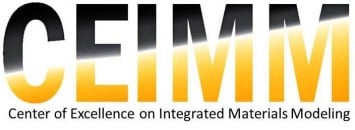Seminar: Michael Mills, April 5, 2013
CEIMM Inaugural Seminar
Characterizing Novel Deformation Mechanisms in Metallic Alloys and Importance for ICME
The national initiative on Integrated Computational Materials Engineering holds great promise for accelerating the insertion of new materials in high performance structural applications. Achieving this aim relies upon the fidelity of materials models and their ability to capture the connectivity between processing, microstructure and performance. This presentation will focus on advancements in our ability to characterize deformation mechanisms at finer length-scales – from atomic to grain-level behavior. Using electron-microscopy-based techniques, new insights into the governing deformation mechanisms in several important structural materials are being developed. One example to be discussed is the Ni-base superalloys, where a surprising variety of governing mechanisms are observed as a function of microstructure and deformation condition. The important interplay between characterization and modeling at several length-scales (atomistic, phase field and crystal plasticity) in elucidating rate-limiting processes will also be discussed.
About the Speaker
Professor Mills earned his BS degree (1980) from San Jose State University, and MS (1982) and PhD (1985) degrees in Materials Science and Engineering from Stanford University. He joined the Department of Materials Science and Engineering at Ohio State in 1994 as Associate Professor after a two-year post-doctoral appointment at Ecole Polytechnique Federale Lausanne, and six-years as Senior Member of Technical Staff at Sandia National Laboratories. Mills was promoted to Professor in 2000 and was appointed as the McDougal Professor of Engineering in 2004. Professor Mills’ primary research interests are the relationship between microstructure and properties of materials, with special emphasis on transmission electron microscopy techniques which make it possible to the study the structure and chemistry of materials down to atomic dimensions. He has authored or co-authored with members of his group over 160 journal articles. His group is developing new insights into the mechanical behavior of several important metallurgical systems. His present research programs include studies of creep and fatigue in aerospace titanium alloys and nickel-based superalloys, strengthening mechanisms in automotive aluminum alloys, and nanocluster strengthening in ferritic stainless steels for nuclear applications. He has been awarded the Department of Energy (Office of Basic Energy Sciences) Materials Sciences Award for Outstanding Research, the American Society for Metals (ASM) Silver Medal and is a Fellow of ASM.



